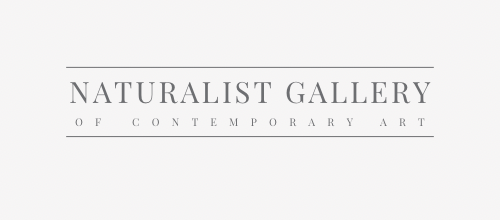Achieving the perfect shade in oil painting requires skill and knowledge.
To achieve the perfect oil paint shade:
- Start light, add dark gradually
- Use a palette knife
- Limit colors in mix (2-3)
- Keep a color journal
- Don't dilute with water
- Follow fat over lean rule
- Protect your health
Whether you're a beginner or an experienced artist, mastering oil paint mixing can elevate your art. Explore these essential tips and techniques to help you create the perfect shades for your masterpiece.
Explore our curated selection of contemporary artists from around the globe.
Naturalist Gallery offers artist representation internationally. Apply your art.
1. Mix from Light to Dark: Start with a light color like Titanium White or Naples Yellow and add a small amount of a darker color like Yellow Ochre gradually. Darker hues have more tinting power, so adding small amounts ensures better control over the shade.
Tip: Naples Yellow is great for lightening reds but may shift blues toward green. Use it mindfully, and document your mixes for future reference.
2. Use a Palette Knife for Mixing: Save your brushes from wear and tear by using a palette knife, especially when working with larger quantities of paint. Avoid overloading brushes with paint, keeping the paint away from the ferrule to ease cleaning.
Tip: Old, worn brushes can be repurposed for mixing, reducing waste.
3. Limit Colors in a Mixture: Keep mixtures simple by using two to three colors (excluding white). Mixing too many colors can result in muddied and dull hues. Gradually add small amounts to control tint, shade, or tone.
4. Prepare an Eco-friendly Solvent and Rag: Clean brushes and palette knives thoroughly after each color mix. Use an eco-friendly solvent for brush cleaning and wipe off excess paint with a cloth. Reuse dirty solvents by letting oil crud settle, allowing for reusing the clean solvent.
Tip: Experiment with cleaning brushes using walnut oil or other vegetable oils to maintain their condition.
5. Change Brushes When Painting: Switch brushes or clean them thoroughly when working on different colors during a painting. This ensures fresh, crisp brushstrokes and prevents accidental color contamination.
6. Keep a Color Journal: Maintain a color journal with swatches and notes for each shade you create. Document the formula, amounts used, and any relevant details. This serves as a valuable reference for future projects.
7. Assess Your Canvas Area: Estimate the paint needed for the area you plan to paint and mix slightly more. Running out of a specific shade can be challenging to reproduce, but leftover paint can be repurposed for underpainting or experimentation.
8. Experiment with Mixtures: Mix colors thoroughly to create a solid third color, or mix them slightly for textured streaks and swirls. Experimentation can lead to unique and beautiful shades.
9. Don't Mix Substances: Never dilute oil paint with water or mix it with water-soluble paints like acrylics. They are incompatible and won't mix well. Use acrylics as an underpainting with proper drying time.
10. Follow the Fat over Lean Rule: Layer fatter (more oil-rich) paint over leaner (less oil-rich) layers to prevent peeling and cracking. Always apply oil paints as the outermost layer, while acrylics work well for underpainting.
11. Use Mediums and Diluents Gradually: Use mediums, diluents, and solvents conservatively and in small increments, adding only as needed. Excessive use can result in underbound paint film and a dull finish.
12. Protect Your Health: Solvents and mediums used in oil painting can be harmful. Use solvent-free or non-toxic alternatives and take precautions to protect your health and the environment.
Apply for Naturalist Gallery Artist Representation.
Mastering oil paint mixing is a fundamental skill for artists. These tips and techniques will help you achieve the perfect shades and enhance your oil painting journey. Experiment, document, and keep these guidelines in mind to create stunning works of art.
You may also find the following articles helpful:
How to Become an Art Collector
Corporate Takeover of the Art World
Art Criticism: Evaluating Contemporary Art
Art Consultants in the Contemporary Art World
The Art Advisor's Guide: Navigating the Art Market
How Art Agents Work with Contemporary Artists



